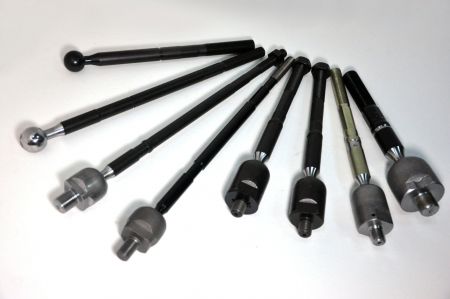-
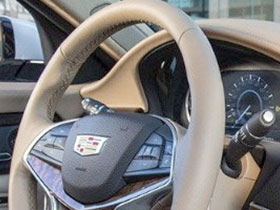
If you own a Cadillac, you understand the importance of a smooth and stable ride. One of the key components ensuring your car's effortless maneuverability is the intricate interplay between rack ends and control arm bushings. How does a control arm bushing work? Control arm bushings are crucial suspension components that connect the control arm to the chassis of your vehicle. They are made with high-strength steel and undergo advanced surface treatments to ensure optimum durability and rust resistance. Laser-etched manufacturing codes guarantee their authenticity and quality. The control arm bushing's primary function is to provide flexibility and cushioning between the control arm and the chassis. This flexibility allows for smooth movement of the control arm, ensuring your Cadillac glides over uneven roads with ease. What Is the Connection Between Rack End and Control Arm Bushing? Rack ends are pivotal in steering mechanisms, converting the rotary motion of the steering wheel into linear motion for the wheels. The connection between rack ends and control arm bushings is indispensable. The control arm bushings, with their shock-absorbing capabilities, complement the stability provided by rack ends, ensuring your Cadillac responds to steering inputs promptly and smoothly. What Are the Signs of Worn Control Arm Bushing? Worn control arm bushings can manifest in various ways. You might experience excessive vibrations, especially during acceleration or braking. Unusual clunking noises while driving over bumps or turning corners can indicate deteriorating bushings. Additionally, uneven tire wear and imprecise steering are common signs of worn control arm bushings. How Does Worn Control Arm Bushing Affect the Rack End? When control arm bushings wear out, the stability of the entire suspension system is compromised. The excessive movement and lack of cushioning impact the precision of the rack end's steering mechanism. This leads to erratic steering, making it challenging to maintain control, especially in critical driving situations.
-

In the realm of automotive finesse, the steering knuckle and rack end take center stage. The steering knuckle, your Chevrolet's anchor, joins the wheel to the suspension system, ensuring the stability and control you rely on. Simultaneously, the rack end, a silent performer, fine-tunes your steering, translating your gentlest touch into the car’s smooth maneuver. How Does Steering Knuckle and Rack End Work? Ever wondered how your car responds so swiftly to your commands? It’s the artistry of the steering knuckle and rack end. When you turn your steering wheel, the steering knuckle pivots gracefully, guiding the wheels in the intended direction. The rack end, with its intricate gear mechanism, amplifies this movement, creating a seamless synergy between your actions and your car’s response. Can Steering Knuckle and Rack End Go Bad? Just like any hero, these components too face the test of time. Continuous usage and exposure to the elements can wear them down. However, with our Chevrolet Rack Ends, durability is a guarantee. Crafted from high-strength steel, designed to withstand the harshest conditions, our Rack Ends ensure your driving experience remains smooth and reliable. Where Is Rack End Located? How Does Rack End Work in a Car? The rack end, a discreet yet vital player, resides at the end of your car’s steering rack. Its purpose? To bridge the gap between the steering rack and the steering linkage. When you turn the wheel, the rack end’s gear engages with the rack, guiding your wheels effortlessly. It's a small but powerful link in the chain, ensuring your Chevrolet responds to your every move.
-
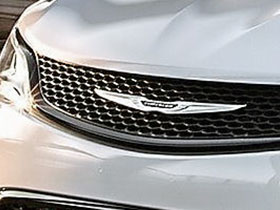
How are the Rack End and Idler Arm Connected Within the Steering Mechanism? In the intricate web of your vehicle's steering, the rack end and idler arm form a crucial link. The idler arm holds the center link, balancing the force exerted by the pitman arm. Simultaneously, the rack end interfaces with the steering rack, translating rotational motion into lateral movement. This connection is the backbone of your steering system's stability. What Impact Does Their Connection Have on Steering Stability and Control? The connection between the idler arm and rack end is fundamental to the stability and control of your Chrysler's steering system. Here's how this connection influences your driving experience: 1. Minimized Drifting: Drifting, where the vehicle pulls to one side, is a common issue with steering systems. A solid connection between the idler arm and rack end helps minimize drifting tendencies. Your Chrysler stays on its intended path, reducing the need for constant corrections while driving, thus enhancing overall control. 2. Improved Handling: The synergy between the idler arm and rack end impacts how your vehicle handles different driving conditions. Whether you're maneuvering through city traffic or cruising on highways, a stable connection ensures consistent handling. You'll notice your vehicle responding predictably, even in challenging situations, enhancing both safety and confidence. 3. Enhanced Stability: When the idler arm and rack end work seamlessly together, your vehicle gains stability. This cohesion ensures that your steering remains steady, even on uneven or rough roads. You'll feel confident behind the wheel, experiencing minimal vibrations and wobbles, allowing for a smoother ride. Can Adjustments Be Made to the Connection Between the Rack End and Idler Arm? Precision is key in the steering system. While adjustments might seem like a solution, it's crucial to note that these connections are designed for specific alignments. Any deviation can lead to imbalances, affecting your vehicle's handling. Therefore, it's advisable to rely on expert technicians who understand the intricacies of these components. Why Choose Great Auto Parts for Your Rack End? -Material Excellence: Our rack ends are made from cold forged or hot forged high-strength steel, guaranteeing durability. -Rust Protection: We apply advanced surface treatments to protect against rust, ensuring longevity. -Traceability: Each rack end is laser-etched with a unique batch code for traceability and quality assurance. -Strength Match: Match or exceed OE pull or push-out strength, ensuring safety. -Direct Replacement: No fitting issues - our rack ends are OE replacements, making installation a breeze. -Flexible Quantities: We understand your needs; small quantities are acceptable with a minimum order quantity as low as 30 pieces. The idler arm and rack end might be humble components, but their role in your Chrysler's steering system is monumental. Trust Great Auto Parts to provide you with the reliability of rack end for your vehicle. Embrace smooth rides, confident turns, and unwavering stability—because with us, your journey is always in capable hands.
-

This junction is where engineering meets functionality, determining the responsiveness and ease of your steering. We're diving deep into the mechanics, addressing common queries about adjustments, vibrations, replacements, and repairs. Discover the artistry of seamless control and elevate your drive to a new level of excellence. The Foundation of a Smooth Ride: Understanding the Bushings and Rack End Bushings absorb shocks, ensuring your wheels maintain contact with the road surface. This stability, coupled with the precision of Rack End, guarantees optimal control over your vehicle. Whether you're cruising on highways or tackling winding roads, these two ensures your car responds predictably and smoothly, providing you with a secure and enjoyable driving experience. Can Rack End and Bushings Be Adjusted? The answer is a resounding yes! Our high-quality Rack End for DODGE is engineered with adjustability in mind. This means you have the flexibility to fine-tune your vehicle's steering, ensuring it matches your driving preferences and requirements. Whether you prefer a firmer grip or a more relaxed response, our Rack End allows for customization. Vibration Woes? Not Anymore! The Smoothness of Our DODGE Rack End Concerns about vibrations during your drive are valid, and we understand the importance of a smooth ride. With our expertly crafted Rack End, vibrations become a thing of the past. Our components are meticulously engineered to provide a vibration-free driving experience, regardless of the terrain. You can say goodbye to that annoying jitter and hello to a ride as smooth as silk. Replacement Made Easy: How to Replace Rack End While this task might sound daunting, fear not! We've simplified the process for you. Our precision-engineered Rack End is designed for effortless replacement. Whether you're a DIY enthusiast or rely on professional mechanics, our parts guarantee a hassle-free installation, ensuring your vehicle maintains its superior performance. Can Rack End Be Repaired? The Wisdom of Opting for Replacements While Rack End is a sturdy component, you might wonder if it can be repaired in case of minor issues. Here's our recommendation: opt for replacements. Choosing our high-quality parts ensures optimal safety and performance. Replacing the Rack End guarantees that your vehicle operates at its best, providing you with the reliability you deserve on the road.
-
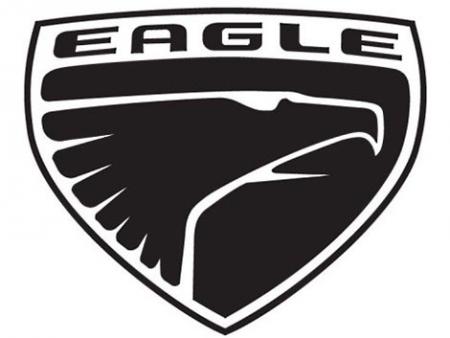
How is the Pitman Arm Made? The pitman arm, a vital part of a vehicle's steering, is made from durable steel or iron. Initially, raw materials are cut and heated in a furnace, making them malleable for forging. Shaping the arm using a die creates its form. After forging, the arm undergoes controlled cooling called tempering to enhance hardness and toughness. Precision machining refines its surface and dimensions. To prevent corrosion, a protective coating is applied. This process ensures the pitman arm is sturdy and can help the car turn smoothly when you steer and add a long-lasting dependability and performance to your Eagle Vehicle. Are the Pitman Arm and Rack End Interchangeable in Steering System? The pitman arm and rack end are integral parts of the steering linkage, working together to translate your steering wheel's movement into the motion of your vehicle's wheels.The pitman arm plays a pivotal role, It connects to the steering gearbox and, through a series of components, ensures your wheels turn smoothly in response to your steering input. On the other hand, the rack end, also known as the outer tie rod end, connects the inner tie rod end to the steering knuckle, allowing the wheels to pivot. While the interchangeability of pitman arms and rack ends can depend on your vehicle's make and model, ensuring they work harmoniously is essential for proper steering function. Compatibility between these components guarantees that your steering operates seamlessly, providing you with control and responsiveness on the road. Just like idler arms, pitman arms, and rack ends are wear-prone parts, vulnerable to the challenges of varied driving conditions. Regular inspection and timely replacement, when necessary, ensure the continued efficiency of your steering system. If you observe signs such as poor steering response or drifting while driving, it's vital to address the issue promptly to maintain your vehicle's safety and performance. Proper lubrication plays a vital role in sustaining this alignment. Lubricants reduce friction between moving parts, safeguarding against wear and tear. Regular maintenance checks, including lubrication assessments, are essential. Neglecting lubrication can lead to misalignment and compromise the effectiveness of the steering system.
-

Dive into the inner workings of your Ford's steering system, where a subtle yet vital partnership between the Intermediate Shaft and the essential Rack End for Ford unfolds. Beyond their mechanical roles, these components collaborate seamlessly to ensure your car moves with grace. What is the Intermediate Shaft? At its core, the Intermediate Shaft is the backbone of your Ford's steering, a sturdy steel rod meticulously designed to bridge the gap between the power steering gearbox and the Rack End. It's the linchpin, translating your steering inputs into precise wheel movements, ensuring your Ford responds effortlessly to your commands. Does Intermediate Shaft Connect with Rack End? Absolutely. The Intermediate Shaft and the Rack End share a vital connection. This synergy allows your Ford to navigate curves and corners with finesse. The Intermediate Shaft communicates with the Rack End, ensuring your steering inputs are translated into smooth, controlled movements, enhancing both performance and safety. Does a Bad Rack End Affect Intermediate Shaft? Indeed, it does. A deteriorating Rack End can disrupt the harmony between these components, putting undue stress on the Intermediate Shaft. Addressing a failing Rack End promptly is essential to maintain the integrity of both parts, ensuring your Ford's steering operates at its optimal level.
-
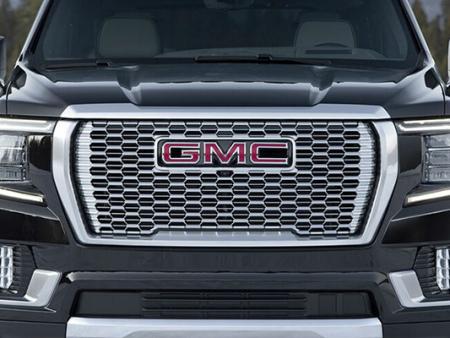
A drag link is a crucial component in automotive use for the steering linkage system of a vehicle. It is responsible for transmitting the movement of the steering gear to the wheels, allowing the driver to control the direction of the vehicle. What is Drag Link Mechanism? The drag link mechanism consists of a long connecting rod with pivots at both ends. One end is connected to the steering gear, while the other end is connected to the steering linkage or directly to the wheels, depending on the vehicle's design. Can Drag Link cause Death Wobble? The main reason for death wobble is the front track bar (including its bushings, joints, and mounts). The stock track bar isn't strong enough, especially with modifications like bigger tires, a lift, or frequent off-roading. These changes go beyond what the stock track bar can handle. The stock track bar is a hollow tube and can bend, causing death wobble on its own. Additionally, the stock bushings wear out quickly and can't handle the side forces on the axle. The track bar axle mount can also wear out, allowing the track bar to move slightly and cause problems.
-
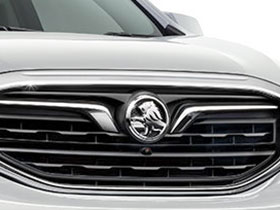
Delving into the intricacies of your HOLDEN's steering system is an empowering journey. When it comes to maintaining your vehicle, understanding how to remove the Steering Column from the Rack End for Holden is a valuable skill. Follow these straightforward steps to navigate the process seamlessly: 1. Locate the Steering Column Joint:Begin by identifying the joint connecting the Steering Column to the Rack End. This is typically situated at the end of the steering rack. 2. Secure the Vehicle:Ensure your Holden is securely positioned on a level surface. Use safety measures, such as wheel chocks and jack stands, to guarantee stability during the maintenance procedure. 3. Disconnect Components:Gradually disconnect the various components attached to the Steering Column, such as the steering wheel and any electrical connections. Exercise caution to prevent damage or mishaps. 4. Access the Rack End:Once the preliminary components are detached, access the Rack End area. This may involve removing protective covers or panels for clear visibility. 5. Loosen Fasteners:Utilize the appropriate tools to loosen the fasteners securing the Steering Column to the Rack End. Depending on your HOLDEN's model, this may involve bolts, nuts, or other fastening mechanisms. 6. Gently Remove the Steering Column:With the fasteners loosened, gently detach the Steering Column from the Rack End. Exercise care to avoid unnecessary strain or damage to any connected components. 7. Inspection and Maintenance:Take advantage of this opportunity to inspect both the Steering Column and Rack End for any signs of wear, damage, or irregularities. Address any issues promptly to ensure optimal steering performance. Is Rack End Better Than Steering Column? To determine whether the Rack End for HOLDEN holds an edge over the Steering Column, it's essential to grasp their distinct roles. While the Steering Column serves as the conduit for your steering input, the Rack End, specifically engineered for Holden, plays a pivotal role in connecting the steering linkage. This connection is critical for precise and responsive steering control. The Rack End's construction, designed to endure the demands of steering dynamics, positions it as a key player in optimizing your Holden's handling. Recognizing the complementary strengths of both components allows you to appreciate their collaborative effort in enhancing your driving experience. Does Steering Column or Rack End Affect Alignment?: Maintaining proper alignment is paramount for a smooth and controlled ride. Both the Steering Column and Rack End contribute significantly to this delicate balance. The Steering Column transmits your steering input, while the Rack End, connecting to the steering linkage, ensures these inputs translate accurately to the wheels. Any misalignment in either the Steering Column or Rack End can have repercussions on your Holden's overall alignment. Regular inspections, alignments, and timely maintenance are indispensable practices to preserve the harmonious synergy between these components and guarantee a straight course on the road.
-

A suspension joint, also known as a ball joint or suspension bushing, is a crucial component in a vehicle's suspension system. Its primary function is to provide a flexible connection between various suspension parts, allowing for controlled movement and articulation of the wheels in response to road irregularities. Suspension joints are essential for ensuring a smooth ride, optimal handling, and maintaining proper wheel alignment. Independent Front Suspension Joint Basics Independent front suspension works on a simple principle: each front wheel is mounted on its own suspension system, allowing it to move up and down independently of the other wheel. This design enables the vehicle to better adapt to changes in road surfaces, bumps, and turns. The key components of an independent front suspension system include the control arms, struts or shock absorbers, and the sway bar. The vital links between your wheel hubs and the control arms are the ball joints, playing a pivotal role. They facilitate a universal pivoting movement between the wheel hubs and control arms, ensuring a secure, seamless ride and precise control of the vehicle. Where are Your Vehicle Suspension Joints and Rack End located? In a Hummer vehicle, the suspension joints and rack ends are strategically positioned to ensure effective suspension performance and steering control. Suspension joints, including ball joints and bushings, are typically located at critical connection points between the vehicle's chassis, control arms, and wheel assemblies. These joints allow for flexibility and movement, facilitating the adaptation to different road conditions. As for rack ends, they are crucial components of the steering system. Rack ends are often found at the ends of the steering rack, connecting to the tie rods. The tie rods, in turn, extend to the steering knuckles on the wheels. This arrangement allows the steering system to translate the driver's input into controlled wheel movement, contributing to proper alignment and responsive steering. The specific placement and design of suspension joints and rack ends can vary between different Hummer models and model years. How To Check Your Steering Joints When Driving Checking the steering joints while driving your Hummer is not a common practice, as a comprehensive inspection is typically done when the vehicle is stationary. However, you can be observant of certain signs and behaviors while driving that may indicate potential issues with the steering system, including the steering joints. Here are some general guidelines: -Listen for Unusual Sounds: Pay attention to any unusual sounds while steering. Squeaks, clunks, or knocking noises may suggest problems with the steering joints or related components. If you notice any persistent noises, it's advisable to have the steering system inspected. -Take Your Car for a Ride: A sudden change in steering responsiveness or difficulty in turning the wheel smoothly during the driving could indicate issues with the steering joints. If you experience any unusual resistance or play in the steering wheel, it's a sign that the steering system should be checked. -Feel for Vibrations: Excessive vibrations felt through the steering wheel can be a sign of problems with the steering components, including joints. Vibrations may suggest misalignment or worn-out parts. -Check for Steering Wheel Centering: While driving on a straight, level road, observe if the steering wheel remains centered. If the steering wheel consistently tilts to one side, it might indicate alignment issues or problems with the steering linkage.
-

Get ready to experience driving like never before – an experience that goes beyond the mundane and dives into the magical.Immerse yourself in the transformative journey powered by Hyundai Rack Ends and Universal Joints. As you embark on your drive, feel the magic unfold in every steering maneuver. It's more than just precision; it's an enchantment crafted by Hyundai's commitment to excellence. What are Universal Joints? Universal joints, often referred to as U-joints, play a pivotal role in connecting different parts of the steering and suspension systems. These ingenious devices allow for flexible movement, compensating for the misalignment between parts, especially when it comes to your Hyundai's steering system. A universal joint is, essentially, a coupling that transmits rotational motion between shafts at various angles. Connection between Universal Joints and Rack Ends The synergy between universal joints and rack ends is integral to your Hyundai's steering precision. The rack end, tailored specifically for Hyundai models, acts as a critical link in the steering mechanism. It connects the steering rack to the tie rod, facilitating smooth and responsive steering. The universal joint's flexibility complements the rack end's stability, creating a seamless connection that ensures optimal control and handling.
-
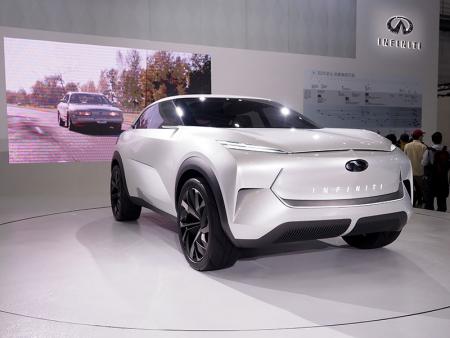
Rack and Pinion: The Power Couple of Steering Systems Before we dive into the intricate world of rack ends, let's set the stage by understanding the fundamental building blocks of your car's steering system – the rack and pinion. These two components work in perfect harmony, transforming the turning of your steering wheel into precise control over your vehicle's direction. The Distinction Between Rack End and Rack and Pinion: The rack end, often referred to as the tie rod end, acts as the vital link connecting the rack and pinion assembly to your vehicle's steering knuckle. Despite its relatively small size, the rack end plays a monumental role in transmitting your steering input to the wheels, ensuring that your car responds precisely to your commands. Deciphering the Telltale Signs of a Failing Rack End: Like any component in your vehicle, rack ends can experience wear and tear over time. Recognizing the warning signs of a failing rack end is paramount for your safety and the longevity of your vehicle. Here are some common indicators to keep an eye out for: 1. Play in the Steering: If you notice excessive play or a loose feeling in your steering wheel, it's a clear indication of a worn-out rack end. 2. Alignment Anomalies: Misaligned wheels leading to uneven tire wear may signal issues with your rack end. 3. Audible Clues: Unusual clunking or knocking sounds while steering could point to a loose or damaged rack end. 4. Steering Struggles: If your steering wheel becomes notably harder to turn or requires increased effort, a failing rack end could be to blame. The Consequences of a Bad Rack End: A malfunctioning rack end can set off a chain reaction in your vehicle's steering system. Left unattended, it can jeopardize your car's handling, stability, and safety. Replacing a faulty rack end promptly is the key to preserving your vehicle's performance and your safety on the road. Can You Safely Drive with a Bad Rack End? A compromised rack end undermines the integrity of your steering, making your vehicle less responsive and potentially putting you at risk. We strongly recommend replacing a faulty rack end as soon as possible to ensure both your safety and your vehicle's well-being.
-
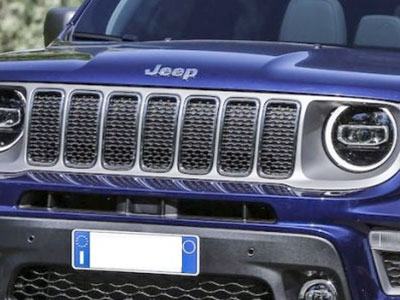
Understanding the Front Axle Basics The front axle is a pivotal component of your vehicle, serving a crucial role in steering and mitigating shocks from the uneven surfaces of the road. Positioned at the front of the vehicle, this axle contributes significantly to the overall stability and control of your car. Front axles are classified into two main types: dead front axles and live front axles. Dead front axles remain stationary and do not rotate with the wheels, providing stability and resilience against external elements like water and dirt. On the other hand, live front axles actively contribute to the vehicle's assembly propulsion by delivering driving power from the gearbox to the front wheels, enhancing overall performance and responsiveness. What Differentiates Front Axle and Rear Axle? Unlike some rear axles that rotate with the vehicle's wheels, the front axle doesn't rotate independently. Instead, it plays a central role in facilitating the steering mechanism, allowing you to maneuver your vehicle with precision. The beam, a key component of the front axle, works in tandem with the swivel pin, track rod, and stub axle to ensure steering responsiveness. Understanding the Collaboration: How the Rack End and Front Axle Work Together The connection between the rack end and the front axle forms a critical link in the intricate network of components that define your vehicle's steering system. The rack end, a crucial part of the steering mechanism, plays a pivotal role in translating the rotational motion of the steering wheel into lateral movement of the front wheels. The front axle, situated at the front of the vehicle, is responsible for supporting the front wheels and aiding in steering. The connection between the rack end and the front axle is established through the tie rod. The tie rod extends from the inner side of the rack end to the front axle, establishing a direct linkage between the steering mechanism and the wheels. As the driver turns the steering wheel, the rotational force is transmitted to the rack end. This, in turn, prompts lateral movement of the steering rack. The tie rod, connected to the rack end, translates this lateral movement into a rotational force that is imparted to the front axle. Consequently, the front wheels respond by turning in the desired direction. How a Damaged Rack End Affects your Jeep's Front Axle A damaged rack end can have significant repercussions on the front axle and, consequently, the overall steering performance of your vehicle. The rack end is a critical component in the steering system, and any impairment to its functionality can impact the alignment, responsiveness, and safety of your front axle.
-
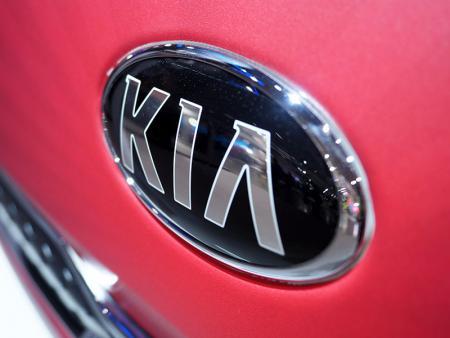
Understanding your Kia's steering system highlights the significance of each component, with the Kia Rack End being a central focus of our expertise. Crafted exclusively for Kia models, our rack ends ensure efficient control and responsiveness on the road, contributing to a reliable driving experience tailored to your Kia's needs. But what exactly is a rack end, and how does it relate to other critical components like the wheel hub? Are Wheel Hub and Rack End Interchangeable? The wheel hub and rack end serve distinct functions in your Kia's steering and suspension system. While they aren't interchangeable, both are vital for ensuring a smooth and controlled ride. The wheel hub is responsible for supporting the wheel assembly, allowing it to rotate freely. On the other hand, the rack end connects the steering rack to the tie rod, translating the steering input into movement at the wheels. Are Wheel Hubs Universal? No, wheel hubs are not universal. They are designed to match specific vehicle makes and models. Our Suspension & Steering Parts, including the rack end for Kia, are crafted with precision to fit seamlessly into your Kia's system, ensuring compatibility and optimal performance. Understanding the Roles: Wheel Hub and Rack End Wheel Hub's Role: The wheel hub provides a stable and secure mounting for the wheels, enabling them to rotate smoothly. It plays a critical role in maintaining proper alignment and supporting the vehicle's weight. Rack End's Role: The rack end, on the other hand, facilitates the steering process by connecting the steering rack to the tie rod. This connection ensures that your steering inputs are translated into movement at the wheels, allowing you to navigate with precision. Why Does Rack End Go Bad? Over time, rack ends can wear out due to factors such as continuous use, road conditions, and exposure to the elements. Common signs of a failing rack end include steering looseness, uneven tire wear, and a knocking noise when turning. Regular inspections and timely replacements with high-quality parts can prevent these issues and keep your Kia's steering in top shape.
-
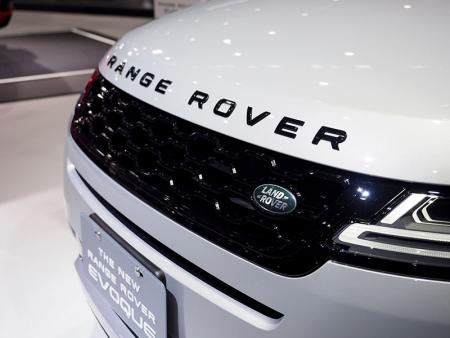
Nestled within your Land Rover’s robust suspension system system lies the intricate dance of components, each playing a vital role in ensuring your drive is not just smooth, but exceptional. Among these components, the gear box and rack end emerge as the dynamic duo, orchestrating the art of steering. At Great Auto Part, we understand the pivotal role of the gear box and rack end in shaping your driving experience Gear Box: Unlocking Raw Power with Precision The gear box is the powerhouse of your Land Rover, transforming raw engine power into seamless motion. It's not just a mechanical marvel; it’s the nerve center of your vehicle’s performance. Imagine it as the conductor of a symphony, harmonizing the energy flow with finesse. Whether you're navigating bustling city streets or conquering rugged terrains, the gear box ensures your Land Rover responds instantaneously, delivering a driving experience that's as thrilling as it is reliable.
-
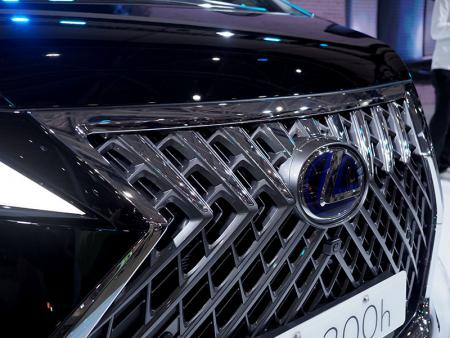
When it comes to the smooth operation of your Lexus, every component in your vehicle's suspension and steering system plays a crucial role. Among these vital components, the "rack end" for Lexus stands out as a key player in ensuring a safe and comfortable driving experience. The Heart of Your Lexus's Steering: Rack End Explained At the core of your Lexus's steering system lies the rack and pinion mechanism, a fundamental component responsible for translating your steering wheel's movements into a change in direction for your vehicle. The rack end, also known as a tie rod end, plays an integral role in this system. It connects the steering rack to the steering knuckle, allowing for precise control over your vehicle's direction. Function of Rack End in Rack Pinion Steering The rack end acts as a pivot point, facilitating the smooth and controlled movement of the steering rack. When you turn your steering wheel, the rack end ensures that the steering knuckle and, subsequently, your wheels, follow suit. This precise synchronization is what enables you to navigate corners and maintain control over your Lexus with ease. The Cost of Keeping Your Steering in Top Shape Now that we've established the critical role of the rack end, you might wonder about the financial aspect of maintaining this essential component. When it comes to the cost of fixing or replacing a rack end for your Lexus, it's important to consider several factors. What determines the cost of fixing a rack end in Rack Pinion Steering system? The cost varies based on several factors, including the make and model of your Lexus, labor costs, and whether you opt for genuine OEM (Original Equipment Manufacturer) parts or aftermarket replacements. However, one thing is for certain: addressing rack end issues promptly is crucial to prevent more extensive and costly steering system problems down the road. Your Premier Destination for Lexus Rack Ends When it comes to replacing or repairing your Lexus's rack end, you want a reliable source that offers top-quality parts. That's where we come in. At Great Auto Parts, we specialize in providing high-quality suspension and steering parts, including rack ends, that meet and exceed industry standards.
-
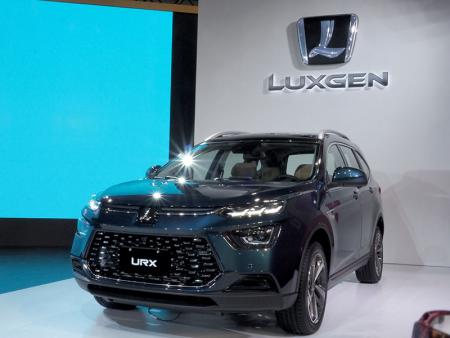
Step into the theater of driving excellence, where the protagonists are none other than tie rod boot and rack end. In this narrative, we explore the captivating synergy between these automotive virtuosos, transforming every moment behind the wheel into a finely orchestrated act of control. Tie Rod Boot Impact on Rack End Vulnerability The tie rod boot acts as a formidable barrier against external elements, such as road debris and moisture. By preserving the integrity of the tie rod boot, we create a robust defense system that shields the rack end from potential damage. A compromised tie rod boot exposes the rack end to contaminants, increasing its vulnerability and potentially leading to premature wear and tear. Think of it as a protective shield, ensuring the heart of your steering system remains resilient against the elements. Steering System Maintenance with Tie Rod Boot Regular inspections and timely replacements of tie rod boot is akin to routine check-ups for your vehicle's steering health. These preventative measures are crucial for maintaining the overall well-being and longevity of both tie rod boot and rack end. By identifying and addressing issues early on, you not only extend the lifespan of these components but also ensure that your steering system operates at peak performance. Consequences of Driving with Damaged Tie Rod Boot Picture a damaged tie rod boot as an open invitation for contaminants to wreak havoc on your rack end. Driving with a compromised boot leads to increased friction, accelerated wear, and a decline in the overall performance of the rack end. Proactively addressing the boot issue serves as a crucial preventative measure. By doing so, you not only preserve the current state of your rack end but also prevent potential long-term damage that could result in costly repairs. Interconnected Functions of Tie Rod Boot and Rack End The relationship between tie rod boot and rack end is symbiotic when it comes to steering responsiveness and control. Tie rod boot acts as the guardians, preserving the rack end's structural integrity. A deteriorating tie rod boot compromises the smooth operation of the rack end, affecting steering responsiveness and, consequently, vehicle control. Optimal vehicle handling is achieved when both tie rod boot and rack end are in prime condition, working together seamlessly to navigate the twists and turns of the road.
-
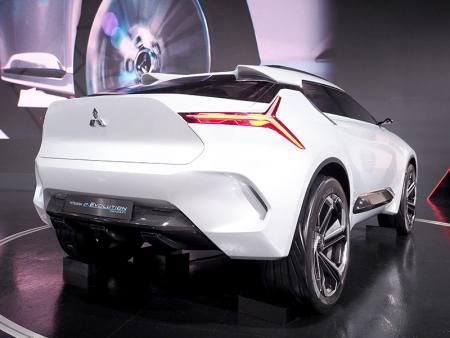
In the heart of every Mitsubishi, a symphony of precision plays out on the roads. It's not just a vehicle; it’s a testament to engineering excellence. At the core of this brilliance lies the intricate dance between the steering gear and the rack end. These aren't just parts; they are the architects of your control, the sculptors of your driving experience. Embracing the Power of Mitsubishi Rack Ends: Your Mitsubishi's steering isn't just about the wheel you hold; it's about the connection to the road, the responsiveness to your touch. Our Rack Ends for Mitsubishi are the keystones of this connection. Crafted with meticulous care, our rack ends redefine durability, ensuring your steering system's integrity is unwavering even under the most demanding conditions. Whether you're navigating sharp corners or cruising down highways, our Mitsubishi Rack Ends promise not just control, but mastery. The Art of Steering Gear: Now, let's talk about the brain behind the operation – the steering gear. Your Mitsubishi's steering gear is the architect of control, responsible for translating your steering wheel movements into the precise adjustments needed to guide your vehicle. It's the component that ensures you stay on your intended path, whether you're making a subtle lane change or executing a sharp turn. The Perfect Fusion: Mitsubishi Rack Ends and Steering Gear: When our Mitsubishi Rack Ends and Steering Gear come together, they create a synergy that’s unparalleled. Imagine the confidence of knowing that every turn is met with a response that's not just quick, but also smooth. Whether you're maneuvering through crowded streets or taking the scenic route, this fusion ensures that your Mitsubishi becomes an extension of your will, responding with a precision that’s awe-inspiring.
-

Discover the pinnacle of automotive excellence with our premium selection of Oldsmobile suspension and steering parts, specifically designed to elevate your driving experience. Our range includes high-quality Rack Ends , integral to the Oldsmobile's acclaimed precision and durability. Perfectly tailored for Oldsmobile models, our products ensure seamless compatibility and superior performance. Delve into our collection, where each component, from Sway Bar Links to Tie Rod Ends and Ball Joints, adheres to the highest standards of quality and design. Experience the ultimate in vehicle handling and safety, designed to keep your Oldsmobile at the forefront of automotive innovation. A Historical Odyssey: CV Joints and Rack End Through Time: Let's rewind the clock and journey through the annals of automotive history. The story begins in the early 20th century, where Constant Velocity (CV) Joints emerged as a game-changer. Revolutionizing the transmission of power to the wheels, these joints showcased an innovative design capable of adapting to varying angles and speeds, eliminating the need for a sliding yoke. Fast forward to the present, and CV Joints continue to be the backbone of a seamless driving experience, providing unparalleled smoothness on every turn. Rack End, often overlooked in the grand scheme of things, has a history intertwined with the evolution of steering mechanisms. Responsible for converting the rotational motion of the steering wheel into the linear motion needed for turning the wheels, Rack End quietly ensures your Oldsmobile responds promptly to every twist and turn of the road. Are CV Joints Part of Rack and Pinion? One might wonder if these components are interconnected. The answer is no. CV Joints and Rack and Pinion are distinct entities, each with its unique role in the intricate dance of automotive dynamics. While CV Joints focus on efficient power delivery to the wheels, Rack and Pinion take the lead in managing steering motion, creating a harmonious symphony of coordinated movement. How CV Joints Work: Understanding the magic behind CV Joints involves diving into their intricate mechanics. Imagine your Oldsmobile navigating a winding road or tackling uneven terrain. CV Joints excel in such scenarios, ensuring a constant and reliable transfer of power to the wheels, thanks to their adaptive design. As the wheels turn and angles vary, CV Joints allow for flexibility without sacrificing the efficiency of power delivery, providing a smooth and responsive driving experience. Failure Chronicles: The Ebb and Flow of CV Joints and Rack End: No mechanical marvel is immune to the passage of time and the wear and tear of regular use. CV Joints and Rack End are no exceptions. Constant exposure to diverse road conditions, temperature fluctuations, and the general rigors of daily driving contribute to their eventual degradation. Causes of failure range from inadequate lubrication to contamination and general wear on the joints. The Domino Effect: Consequences of Failed CV Joints and Rack End: A breakdown in either CV Joints or Rack End can have far-reaching consequences that extend beyond mere inconvenience. Symptoms of impending failure may start subtly, with vibrations or compromised handling, but left unaddressed, they can escalate to a loss of control. Ignoring warning signs may result in extensive damage to your Oldsmobile's suspension and steering systems, posing a significant safety risk to both you and your passengers.
-

When it comes to your vehicle's steering and suspension, understanding the components like inner and outer tie rods is crucial. These seemingly small parts play a significant role in ensuring your car's stability and control. Understanding the nuances of rack end and outer tie rod empowers you as a vehicle owner. At Great Auto Parts, we believe in empowering our customers with knowledge. What are Inner and Outer Tie Rods? Inner tie rod, known as rack end, and outer tie rods are pivotal elements of your vehicle's steering and suspension system. Their primary function is to connect the steering rack to the steering knuckle, enabling the driver's input to be transmitted to the wheels effectively. The rack end attaches to the steering rack, while the outer tie rod connects to the steering knuckle, collectively forming the tie rod assembly. The Connection between Rack End and Outer Tie Rod The inner tie rods initiate steering movements and the outer tie rods stabilize the wheels. This intricate interplay between these components is essential for a vehicle's steering system's efficiency and safety. Regular maintenance, prompt replacement when needed, and attention to the synergy between these parts are vital for a vehicle's optimal performance and the driver's peace of mind on the road. (PLEASE INSERT RACK END, INNER AND OUTER TIE ROD IMAGE HERE) Identifying Rack End and Outer Tie Rods on your Opal: A Quick Guide Locating tie rods is straightforward: - Rack End (Inner Tie Rod): Check under the hood where the steering column connects to the steering rack. (PLEASE INSERT IMAGE HERE) -Outer Tie Rod: Visible from underneath the vehicle, it connects to the steering knuckle. (PLEASE INSERT IMAGE HERE) Rack End vs. Outer Tie Rods: Safety Considerations The rack end along with the outer tie rod ends, are crucial components of a vehicle's steering system. Each plays a significant role in ensuring proper steering function and control. Rack end and outer tie rods are integral, but if one were to fail, the outer tie rod poses more significant risks. The outer tie rod directly connects to the steering knuckle, holding the front wheel in place. Failure can lead to wobbling or detachment, potentially causing accidents. While rack end failure results in play in the steering, it's critical to maintain both components for optimal safety.
-
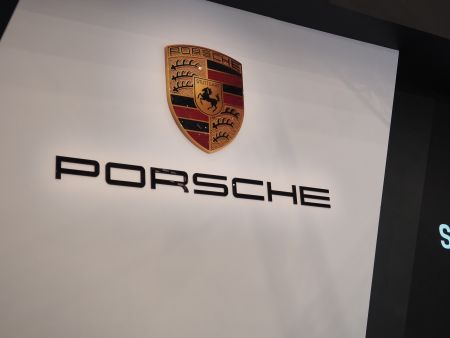
Picture yourself navigating a winding mountain pass in your Porsche, the vehicle gliding effortlessly around each curve and maintaining composure over varying terrain. This exceptional handling is the result of a harmonious partnership within the car's mechanics: the rack end and the chassis control system seamlessly collaborating to ensure every journey is characterized by stability and precision. The Essential Role of Rack Ends in Porsche's Superior Handling Every porsche models are renowned for their exceptional driving experience. This is largely due to their advanced chassis control systems. Within these systems, the rack end plays a fundamental yet often overlooked role. At Great Auto Parts, we focus on supplying these vital components, enabling businesses to deliver the highest level of performance that Porsche drivers expect. Porsche's Chassis Control: Mastering Comfort and Performance Porsche's Dynamic Chassis Control (PDCC) and its sport-focused variant, PDCC Sport, stand at the forefront of automotive innovation. These systems are engineered for active roll stabilization, a critical feature for enhancing vehicle stability and road grip during demanding maneuvers. By actively countering the vehicle's natural tendency to lean during turns, PDCC ensures a smoother, more stable cornering experience. PDCC Sport takes this concept further, targeting drivers who crave a sportier, track-like driving experience. It employs active electromechanical anti-roll bars for quicker response, significantly improving performance during high-speed driving and aggressive maneuvers. This advanced system not only elevates the driving experience but also maintains a high level of responsiveness, essential for spirited driving. Both systems exemplify Porsche's commitment to combining driving comfort with exhilarating performance. By minimizing body roll and enhancing stability, they offer a ride that's both enjoyable and dynamic, suitable for diverse driving conditions. This blend of comfort and performance underlines Porsche's dedication to delivering an unmatched driving experience, whether on city streets or racing circuits. Rack Ends: Crucial for Steering Precision and Stability in Porsche's Chassis Control Rack ends might seem like minor components in the grand scheme of a Porsche's sophisticated chassis system, but their role is anything but minor. These components are fundamental in ensuring that every movement of the steering wheel is accurately and efficiently translated into the correct wheel movement. This precision is vital for maintaining the high standards of handling and stability that Porsche vehicles are known for.
-

The Power Steering Pump: Your Pontiac's Muscle What It Is and Why It Matters The Power Steering Pump is akin to the muscles in a steering system. It's a hydraulic pump that creates the pressure needed to help turn the steering wheel with ease. This component is vital for reducing the physical effort required to steer the car, particularly during low-speed maneuvers or while parking. Locating the Power Steering Pump In most Pontiac models, the power steering pump is conveniently located near the front of the engine, driven by the engine's serpentine belt. It's typically identifiable by its pulley system and the fluid reservoir attached to it, with hoses running from the pump to the steering gear. The Rack End: A Key Player in Steering Precision The Role of the Rack End in Steering The Rack End for Pontiac is a crucial part of the steering linkage. It connects the steering rack to each front wheel through the tie rods. The rack end's condition directly impacts the steering response and accuracy. A well-functioning rack end ensures smooth steering and contributes to the overall stability and handling of your Pontiac. Interplay Between Rack End and Power Steering Pump The condition of the rack end can significantly influence the performance of the power steering pump. A faulty rack end can lead to increased steering effort, which in turn strains the power steering pump. Over time, this can lead to wear and tear on the pump, potentially shortening its lifespan. Diagnosing Steering System Issues Identifying Power Steering Pump Problems Recognizing a failing power steering pump is crucial for timely maintenance. Common signs include a whining or groaning noise when turning the wheel, a noticeable decrease in steering performance, or fluid leaks around the pump area. These symptoms suggest that the pump may be struggling to maintain adequate pressure. Spotting Rack End Issues Issues with the rack end often manifest as loose or unresponsive steering, unusual tire wear, or clunking noises during turns. These signs indicate that the rack end might be worn out or damaged, affecting the vehicle's alignment and steering precision. Superior Suspension & Steering Parts for Peak Performance Our range of Suspension & Steering parts for PONTIAC is designed to meet the highest standards of quality and performance. Each part, including the Rack End, Stabilizer Link, Ball Joint, Tie Rod End, and Control Arm, is crafted following stringent American and German automotive standards.
-

What is a Front Suspension? Front suspension systems in vehicles have played an equally pivotal role in automotive engineering. Historically, front suspensions have evolved to provide optimal steering control and absorb shocks from road surfaces. Unlike the rear suspension systems of the early 20th century, which were heavily influenced by the need to manage torque and vehicle weight distribution, front suspensions have been primarily focused on improving handling and ride comfort. The design of front and rear suspension of a car may be different. How To Find Rack End in your Vehicle Front Suspension? Identifying the rack end in your vehicle's front suspension is a straightforward process, particularly if you have a basic understanding of your vehicle's steering and suspension system. At each end of the steering rack, you'll find the rack ends. These are smaller rod-like components extending from the rack to the wheels. Rack ends often have rubber or plastic boots protecting the joint. Role of Rack End in Front Suspension There are various functions and improvements related to the rack end in vehicle suspension systems. 1. Energy Harvesting and Conversion: The rack end, as part of an energy harvesting shock absorber system, is instrumental in converting kinetic energy from suspension vibrations into electrical energy. This is particularly beneficial in electric and hybrid vehicles, enhancing their range and efficiency. 2. Adjustable Suspension Characteristics: The rack-and-pinion mechanism allows for altering the suspension characteristics without changing the spring and damper properties. This means that the same suspension system can offer different settings for a softer or harder ride, adapting to various driving conditions. 3. Vibration Control: In electrorheological fluid-based suspension systems, the rack and pinion mechanism is key in controlling vibrations. It converts linear motion to rotary motion, activating a generator that not only produces electrical energy but also aids in vibration control. 4. Steering Enhancement: The rack end is integral to steering systems, particularly in electric power steering systems. It helps in attenuating road feedback, reducing driver effort, and enhancing the overall steering feel, contributing to a more comfortable and controlled driving experience. 5. Optimization of Steering Systems: Research has focused on optimizing rack and pinion steering systems for various applications, including all-terrain vehicles (ATVs) and standard automobiles. This optimization aims to improve steering accuracy, reduce wear, and enhance vehicle handling. 6. Enhanced Comfort and Performance: The integration of the rack end in suspension systems with inerters or semi-active components significantly improves passenger comfort. It also coordinates the overall performance of the vehicle, balancing handling and ride quality.
-
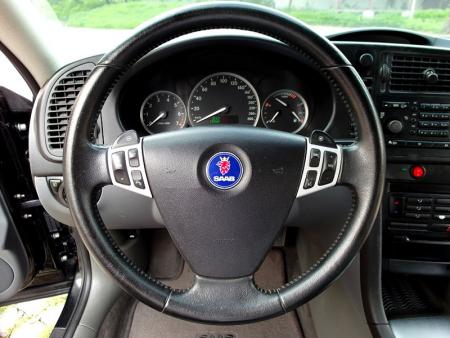
What is Torsion Bar Suspension? A torsion bar suspension is a type of vehicle suspension system that utilizes a torsion bar as the main load-bearing component. This bar is a long, thin rod of steel or another type of metal that twists when force is applied to it. How It Works: -Twisting Mechanism: The torsion bar is anchored at one end to the vehicle's frame or chassis. The other end is connected to a control arm, which is attached to the wheel's spindle or axle. -Absorbing Road Impacts: As the wheel moves up and down over bumps or irregularities in the road, it causes the torsion bar to twist. The bar's resistance to this twisting provides the springing action for the suspension, absorbing and dampening the impacts. Synergy in Motion: Dynamic Interaction Between Torsion Bar and Rack Ends -Wheel Alignment and Steering The torsion bar's effect on the vehicle's suspension geometry can influence wheel alignment. Proper wheel alignment is essential for accurate and responsive steering, which involves the rack end. -Suspension Movement Affecting Steering As the suspension moves up and down (especially in response to road conditions), it can slightly alter the angles at which the steering components (including the rack end) operate. This can affect steering responsiveness and precision. The Crucial Connectors Between Torsion Bar and Rack End -Control Arms and Steering Knuckle These components are part of the connection between the suspension and steering systems. The control arms, which may be connected to the torsion bar, interact with the steering knuckle to which the tie rods (connected to the rack end) are attached. -Tie Rods Tie rods connect the rack end to the steering knuckle. Any movement in the suspension system (partly controlled by the torsion bar) can lead to slight changes in the positioning of these components, thus affecting steering.
Press Release
-
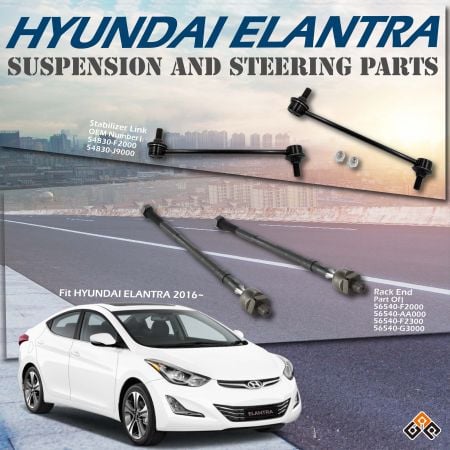 Hyundai Elantra & Kia e-Niro Rack end and sway bar links
Hyundai Elantra & Kia e-Niro Rack end and sway bar linksHyundai Elantra inner tie rod and stabilizer link 2016~ model
Read More -
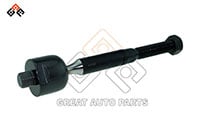 Dodge Durango inner tierod
Dodge Durango inner tierodNew product released for Dodge Durango 16 ~ & Jeep Grand Cherokee 16~, Made In Taiwan with high quality, we offer 2 Years or 50,000 KM warranties, conditions applied.
Read More -
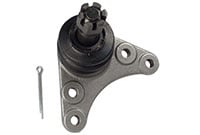 Front ISUZU D-MAX ball Joint
Front ISUZU D-MAX ball JointBall Joint fits ISUZU D-MAX I/ II 02~ , 原廠號碼有8-97235-777-0 8-97365-018-0 8-98005-827-0 JBJ7534, Made In Taiwan with high quality, we offer 2 Years or 50,000 KM warranties,...
Read More

